Scindapsus is a prominent member of the Aroid family. The genus includes about 25 species that can be found in the wildlife of Southeast Asia. These evergreen creepers are epiphytic plants and can climb a tree to a height of 15 m. The genus name in the literal translation means "a tree that resembles ivy." You can find other flower names - a golden potos, black ivy, a husband.
The plant has gained immense popularity due to the bright, dense and rapidly growing leafy part. Its unpretentiousness allows you to grow a flower in workrooms, warehouses, offices, shops, and some varieties become an excellent decoration of garden plots and house facades. Even a novice can afford caring for an unusual liana at home, so even a beginner grower can decorate his house with scindapsus, the decorativeness of which can be seen in the photo.
Content
Variety characteristics, names and description of species
Home varieties are characterized by saturated green or variegated foliage. Leathery leaf plates are oval in shape and are formed alternately on the stem. The root system is represented not only by the underground part, but also by the air roots, thanks to which the liana can rise up. Scindapsus bloom is quite inconspicuous. The flower resembles a corncob wrapped in a bract, like a veil. Indoor species almost never bloom, but beautiful foliage and unpretentiousness in leaving are considered their dignity.
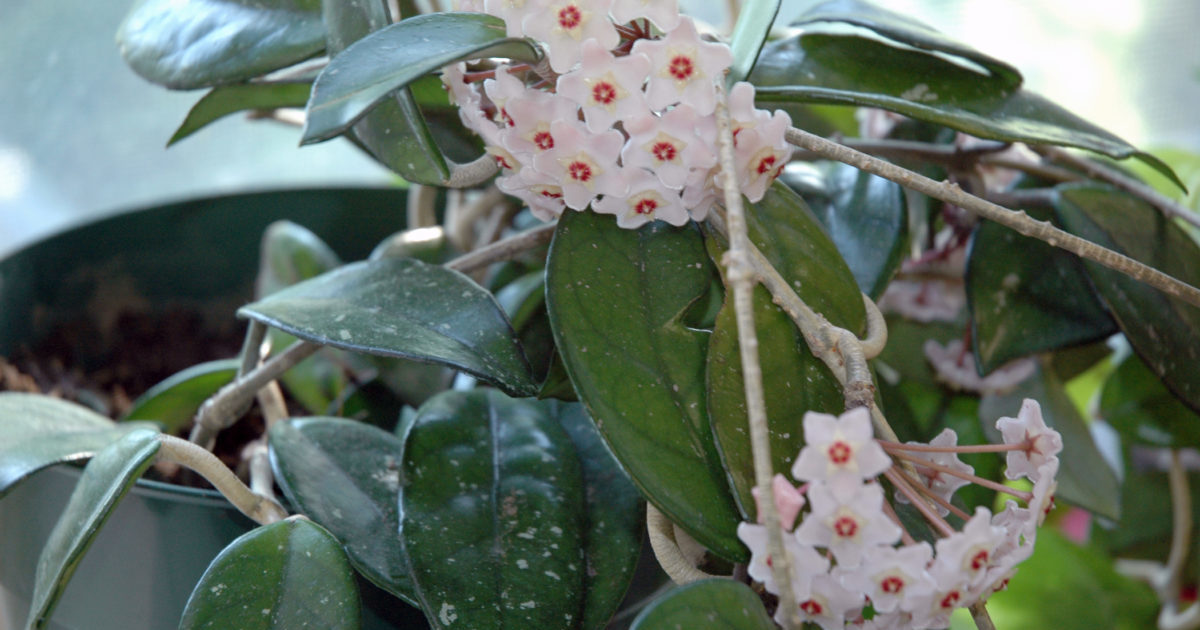 You may be interested in:
You may be interested in:Five types of this flower, shown in the photo, are most often grown as indoor plants, their names are as follows:
- Scindapsus Pictus (Painted) is distinguished by dark green leaves with a silver trim. On the surface of the sheet are silver spots. A strong vine can reach 1 m in length, and in the wild its size exceeds 2.5 m. Large leafy plates grow on short petioles, which makes them seem to grow directly from the shoot. A distinctive feature of the species is its high resistance to diseases and harmful insects.
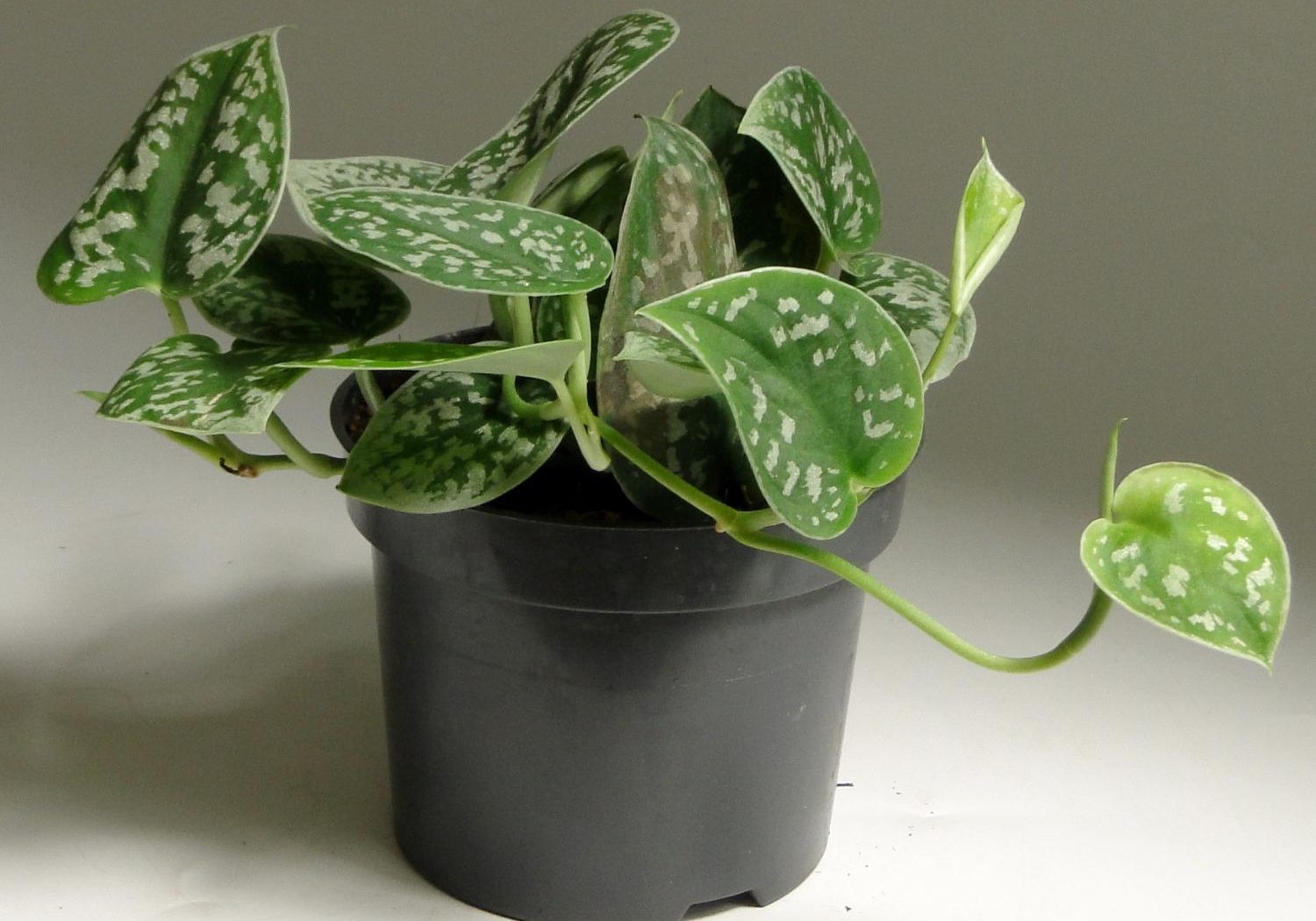
Scindapsus Pictus - Golden scindapsus has unusual green leaves with golden spots on the surface. With good lighting, the foliage casts in green, yellow and gold. For such an unusual foliage, the plant is called the "Golden Lotus." Unlike other species, this liana has a weaker immunity to diseases, therefore, when leaving, it is important to consider this feature.
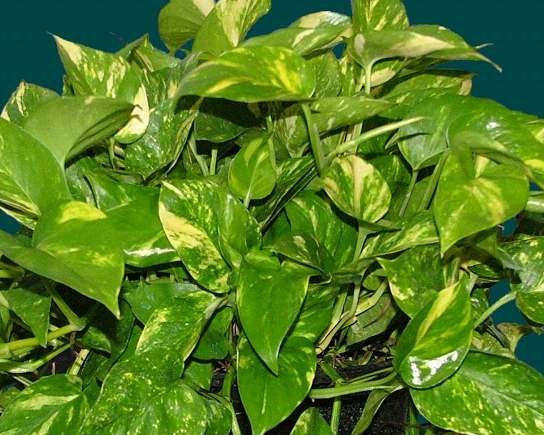
Golden scindapsus - Scindapsus Neon has spectacular foliage of a light, almost light green color. The stems of the plant are painted in the same light green color. Small leaves form on elongated petioles. The variety grows quite quickly, so do not forget about regular pruning.
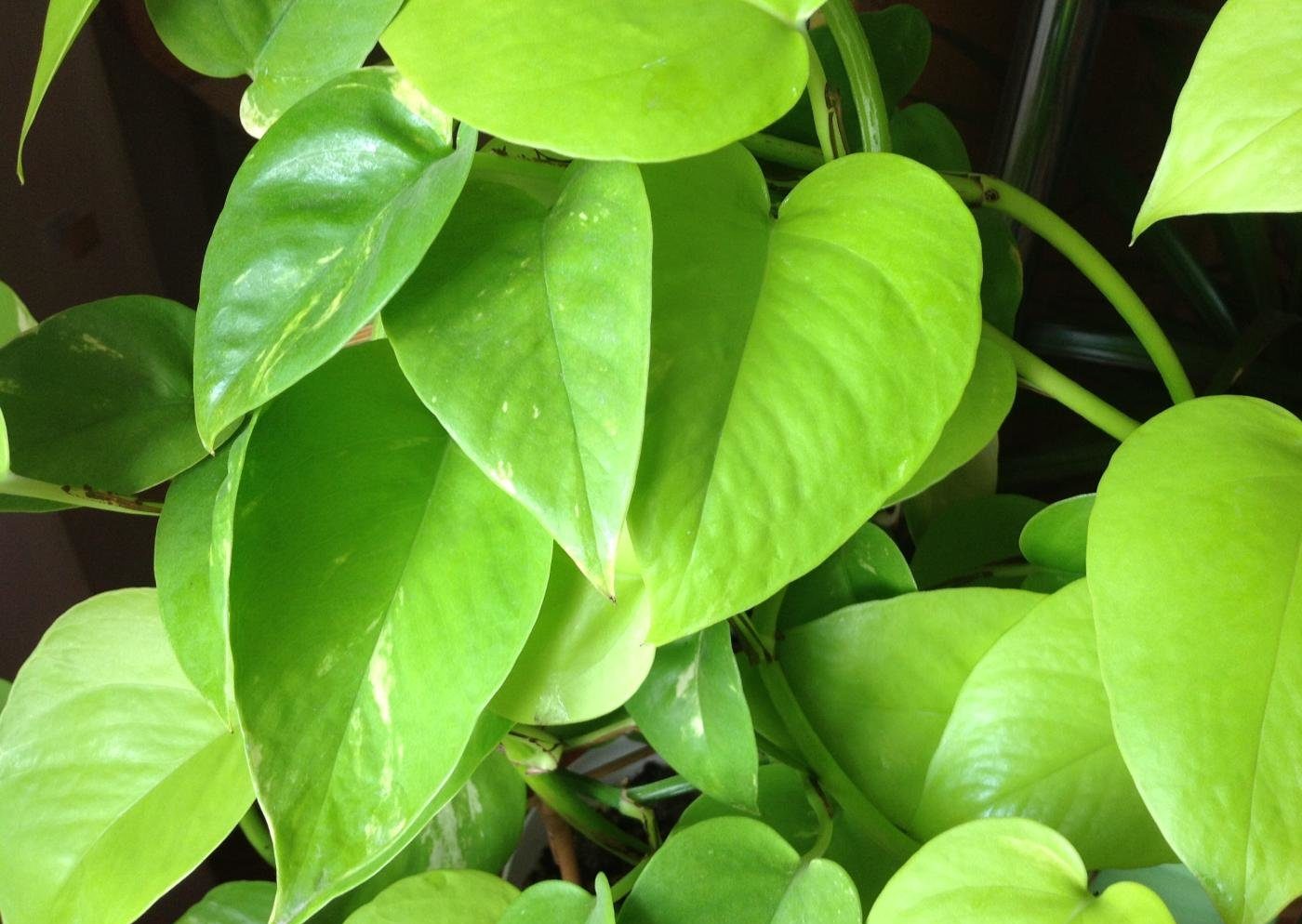
Scindapsus Neon - Scindapsus Joy is less common in home floriculture than previous species. It is mainly grown in greenhouses. The plant is relatively compact in size, but in hanging baskets this liana looks very decorative.The curly stem is covered with green leaves, the outer side of which is covered with gray-silver, almost white spots, which often resemble the edging.
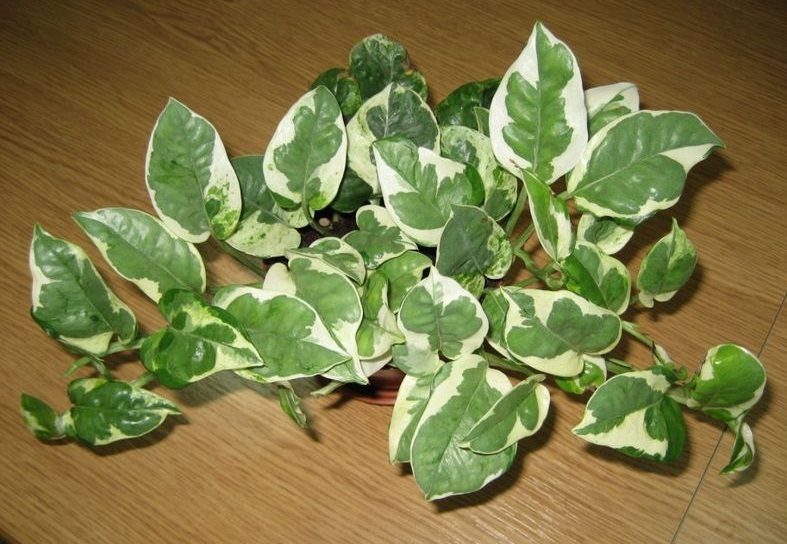
Scindapsus Joy - Scindapsus Marble Queen (Marble Queen) is characterized by variegated leaves of green-silver tones. Upon careful inspection of the leaf pattern, you will notice that the entire surface is randomly covered with light drops and strokes. This feature seems to create a "motion effect", which makes it easy to determine the species affiliation.
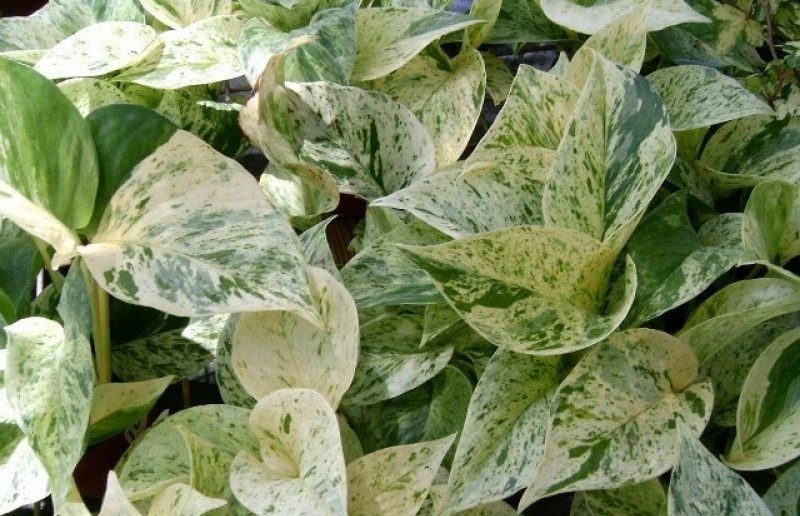
Scindapsus Marble Queen
Rules for the care of scindapsus at home
Unpretentious vine can be grown even in rooms whose conditions are unsuitable for most indoor flowers. But still, the plant requires certain conditions and rules for care, adhering to which you can get a healthy decorative foliage flower.
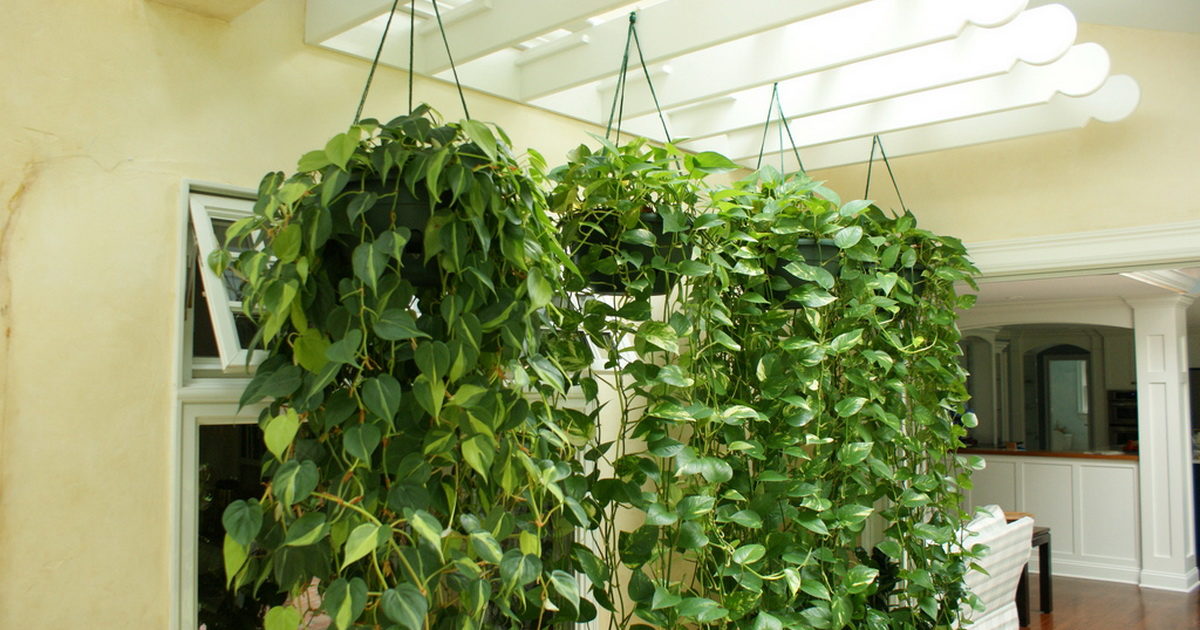 You may be interested in:
You may be interested in:Lighting
Types of scindapsus grow well in poorly lit and shady places. But this does not mean that he does not need sunlight. Like all foliage crops, plants need light to preserve the brightness of foliage. In addition, lighting affects not only the color, but also the splendor of the vine.
If you put the flowerpot in the back of the room, then the leafy plates can fade, and the new leaves will be smaller. For full development, it is better not to deprive the plant with light. Installing special phytolamps for him is not worth it, because it is quite enough for him to light a normal room. Scattered light will be ideal for a flower, but it must be protected from direct sunlight.
Temperature and humidity
Tropical liana is surprisingly not demanding on the temperature regime of the environment. During the development period, it grows well at ordinary room temperature (18-20 ° C). In the cold season, the temperature can be reduced to 16 ° C. The main thing to remember is that a prolonged drop in temperature below 12 ° C can have a detrimental effect on the plant. The liana normally tolerates an increase in temperature in the summer days, but it reacts sharply to drafts and sharp changes in the temperature regime.
Increased humidity favorably affects the flower, so you can not do without regular spraying. Dry air often causes diseases and the appearance of insects, so the humidity level must be monitored. In the heating season, the number of sprayings should be increased, and the flowerpot should be kept away from batteries and other heat sources.
Watering and feeding
Scindapsus is quite sensitive to an excess of water in the soil, so they are watered as the soil dries. The substrate should dry for 1/3 of the pot, only after that you can water it. Water should be settled or rain, but always warm (room temperature). Overfilling can provoke decay of the root system, so the flower should be watered moderately.

They feed the plant with liquid fertilizers, which should be applied regularly. During the period of active growth, the frequency of top dressing should not exceed once every 14-20 days. In winter, feeding can be omitted, but some growers advise feeding the flower every 1-2 months.
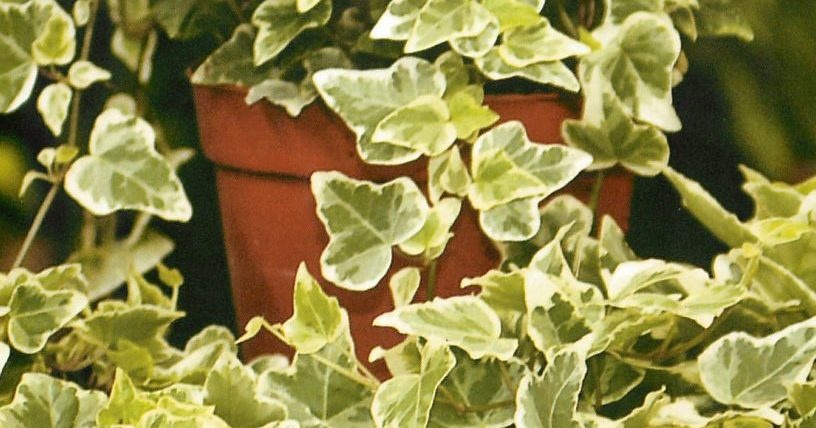 You may be interested in:
You may be interested in:Diseases and Pests
If scabs, thrips, aphids or spider mites appear on the plant, an insecticide should be used to treat it. You can buy the drug Actellik, dilute 10 drops of the agent in 0.5 water and spray the aerial part with this solution. In case of severe infection, the treatment is repeated four times with a week break between each procedure.
The flower rarely gets sick, but with improper care the following problems may occur:
- the appearance of brown spots on the leaves - burns from the ingress of scorching rays, so the plant must be shaded or rearranged;
- if the pattern on the surface of the sheet begins to fade, provide more foliage to the light;
- black spots and decay of the deciduous part indicates frequent overflow or lack of drainage. Liana is transplanted, drainage is changed and moderately watered;
- brown dry spots indicate insufficient humidity in the room, so you need to spray the plant more often and put water containers near the flowerpot.
How to propagate and transplant a flower at home
Scindapsus can be propagated by layering, division of the shoot and cuttings. The latter method is the most common and simple, which is why it is advised to use it for beginners. The procedure is carried out step by step:
- On an adult plant, healthy apical cuttings are chosen.
- Each stalk is cut under a knot, and the slices are treated with a root growth stimulator.

Reproduction and rooting of the scindapsus - The cut off part should have several leaflets.
- A small mixture of moss and sand is poured into a small container and moistened.
- Cuttings are planted in the soil, and the container is covered with a bag or glass to create greenhouse conditions.
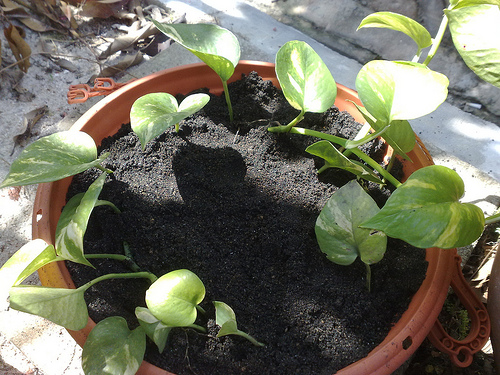
Planting cuttings in the soil - You can root planting material in containers with water.
Rooting should occur in good light, and the ambient temperature should not be lower than 22 ° C. The formation of roots lasts from 2 to 3 weeks. Rooted cuttings are gradually accustomed to the microclimate of the room, after which they are planted in separate flowerpots.
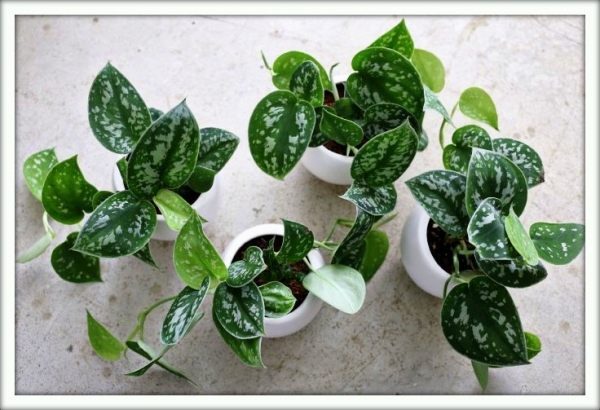
Capacity for landing should be wide, but not shallow. The composition of the soil in the flower has no special requirements, the main thing is that the soil mixture is light and loose. You can buy a ready-made substrate, or you can independently mix sand, humus, sod and peat soil in equal proportions. The bottom of the pot is necessarily filled with a quality layer of drainage.
Differences of scindapsus from epipremnum
Scindapsus and epipremnum have similar biological characteristics and belong to the same Aroid family. It is very difficult to distinguish plants from each other, they are distinguished by the number of seeds formed. Many species that previously belonged to the genus Scindapsus are now considered epipremnums.
For example, the golden scindapsus is today called the golden epipremnum, but both names are considered synonymous. In the literature, conflicting information about species is often found, which is explained by the similarity of aroid lianas. But plants also have differences in small, barely noticeable details.
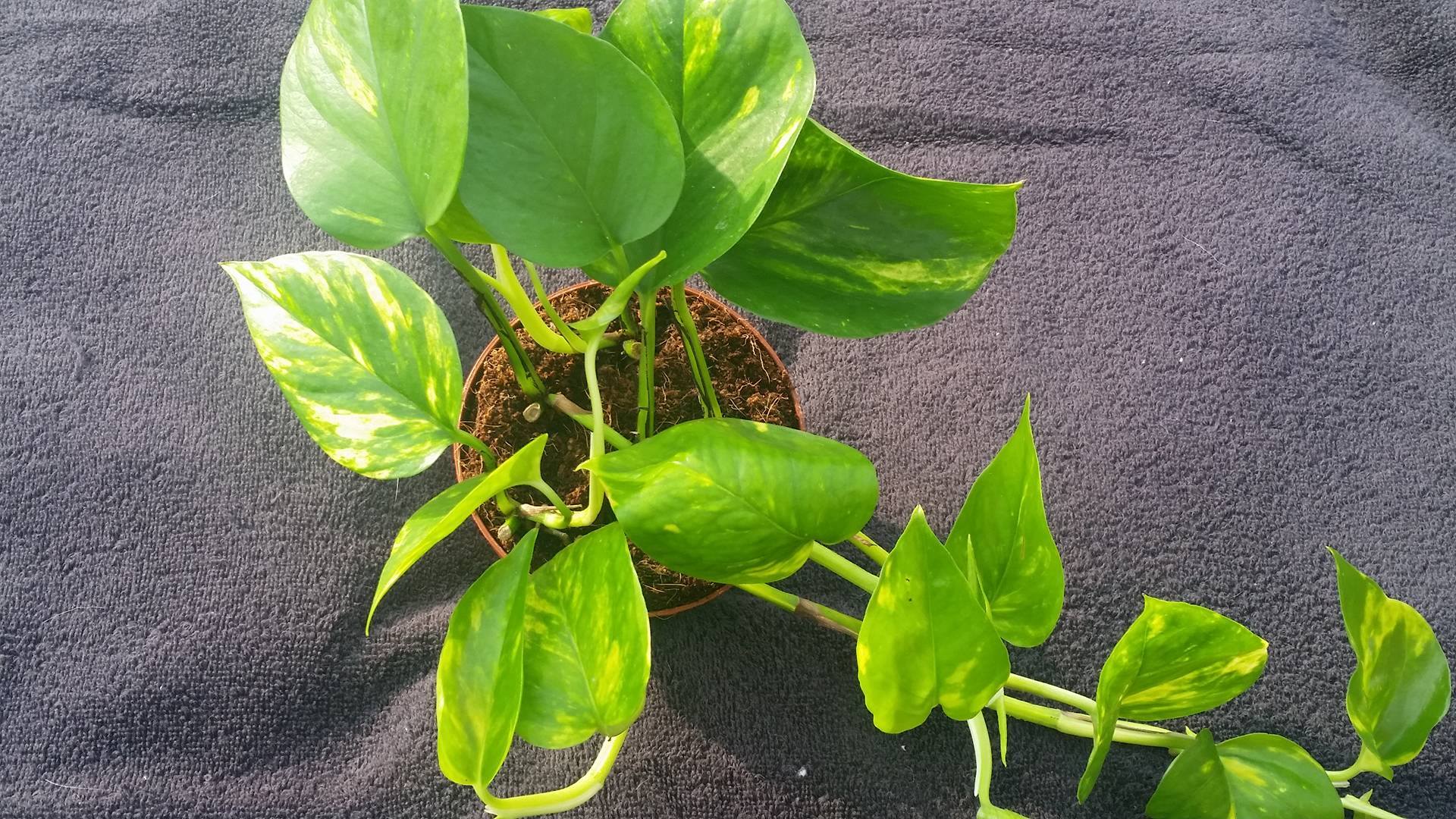
The golden epipremnum differs from the painted scindapsus in its greater resistance to low temperatures. Previously, this species was considered a greenhouse plant.Epipremnum can easily tolerate a drop in temperature to 10-12 ° C, and the painted scindapsus begins to die if the temperature drops below 15 ° C.
The main difference between epipremnum and scindapsus is the shape of the leaf plate. If the first ones are characterized by a symmetrical leaf, then the second liana has curved leaves that resemble a comma.
The principles of growing both vines are almost the same, so you need to breed them according to one algorithm.
Common Growing Questions
Scindapsus is a tropical evergreen liana that creates an atmosphere of wild jungle in any room. Due to its unpretentiousness, the plant can be used to decorate warehouses, workrooms, theaters. To cope with flower care is quite simple, you should only familiarize yourself with the basic requirements of this decorative plant.




 Sow in the ground, without seedlings: 10 beautiful and unpretentious flowers
Sow in the ground, without seedlings: 10 beautiful and unpretentious flowers Platicodon planting and outdoor care
Platicodon planting and outdoor care Hosta - planting and care in the open ground in the Urals
Hosta - planting and care in the open ground in the Urals Oleander - care and growing at home
Oleander - care and growing at home